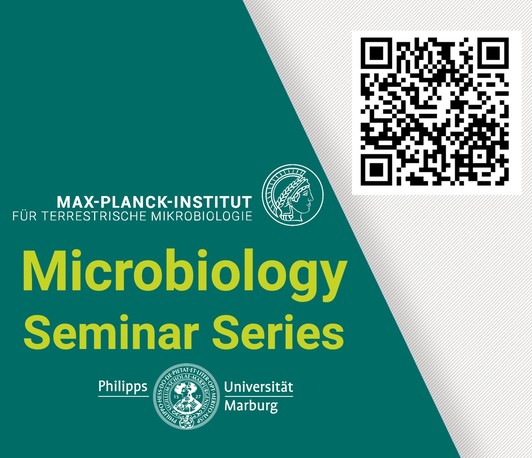Why is E. coli's brain tuned so close to criticality?
Microbiology Seminar Series
- Date: Nov 13, 2023
- Time: 01:15 PM (Local Time Germany)
- Speaker: Prof. Dr. Tom Shimizu
- AMOLF, Amsterdam
- Location: MPI for Terrestrial Microbiology
- Room: Lecture Hall / Hybrid
- Host: Prof. Dr. Victor Sourjik
- Contact: victor.sourjik@synmikro.mpi-marburg.mpg.de

Viewed at sufficiently large scales, the dynamics of any biological population in space and time can be meaningfully described both as particles - individual agents executing random walks in space - and as waves - migrating or expanding fronts of population density. This talk will explore the provocative proposition that confronting this 'biological wave-particle duality' head on provides a surprising and deep connection between three seemingly disparate fields: the physics of behavior, biological active matter, and ecology / evolutionary biology.
I will motivate with specific examples from contrasting biological systems (bacteria, worms, fungi) the notion that the study of small organisms whose collective population-level migrations can be studied within the laboratory represents a rich arena for unearthing exciting new questions that cut across these fields. What aspects of the underlying mechanistic dynamics - whether they be active matter processes controling microbial transport and locomotion, or neural networks that govern animal behavior - quantitatively define population waves of ecological consequence? Can an understanding of the evolutionary selection pressures on such collective phenotypes in turn drive deeper understanding of mechanistic design principles? Could building up a taxonomy of such population waves provide a new coarse-grained basis for understanding, predicting, and managing spatial ecology in real-world habitats?
After introducing these ideas, the talk will zoom in on one specific system, the E. coli chemoreceptor array. This large protein assembly comprising thousands of proteins functions as a nanoscale 'brain' controlling bacterial navigation. We recently discovered - through in vivo FRET experiments in individual cells - that allosteric protein interactions within this array appear tuned close to a critical point, at the boundary between order and disorder. I will describe how functional reasons for this near-critical tuning can be understood by considering how this bacterial 'brain' needs to control both individual- and polulation-level navigation.